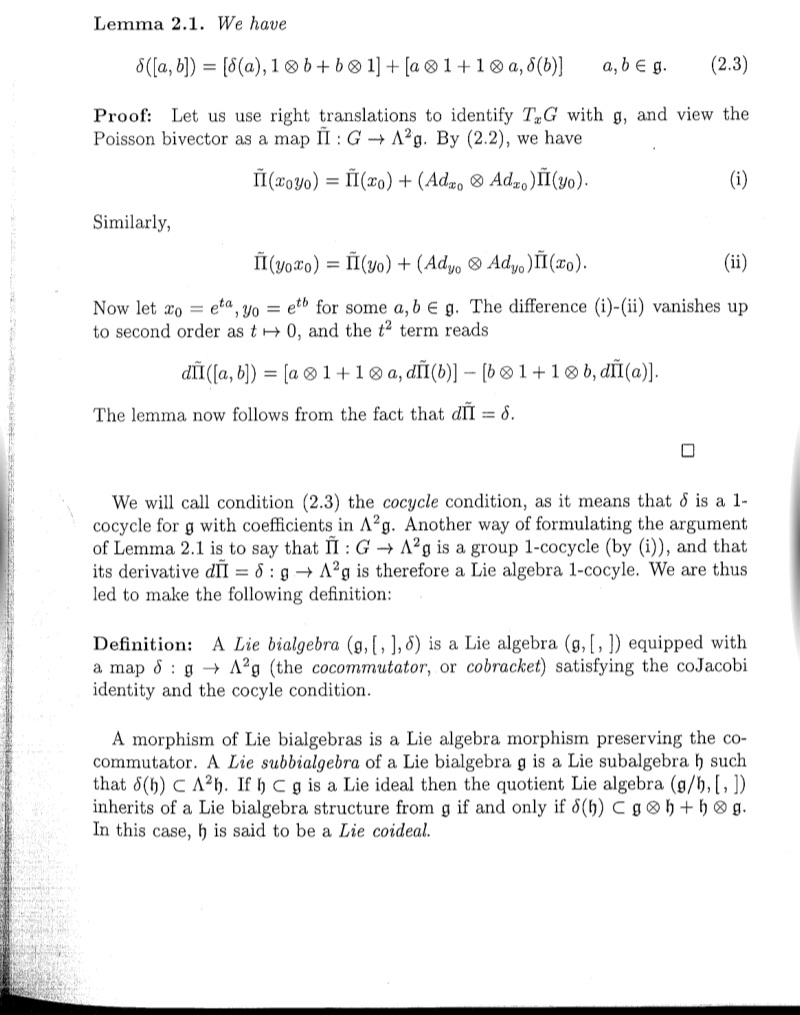Let $G$ be a Poisson–Lie group with Poisson bivector field $\pi$. Let $\pi^{R} \colon G \longrightarrow \bigwedge^2 \mathfrak{g}$ be defined by $$\pi^R (x) = (d_x R_{x^{-1}} \otimes d_x R_{x^{-1}}) \pi (x), \quad x \in G$$ where $R_x \colon G \longrightarrow G$ denotes the right multiplication by $x$. Then it is easy to show that for any $x, y \in G$, $$\pi^R (xy) = \pi^R (x) + (\text {Ad}_x \otimes \text {Ad}_x) \pi^R (y) \,.$$ Let $\delta := d_e \pi^R \colon \mathfrak{g} \longrightarrow \bigwedge^2 \mathfrak{g}$. Then Etingof claimed that $\delta$ satisfies $1$-cocycle condition given by $$\delta ([a,b]) = [\delta (a), b \otimes 1 + 1 \otimes b] + [a \otimes 1 + 1 \otimes a, \delta (b)]$$ for any $a,b \in \mathfrak{g}$. The proof of that is given as follows by the Lemma 2.1 with $\pi^R$ replaced by $\overline{\Pi}$:
Could anyone shed some light on the last equality? I am absolutely clueless as to how did the author reach the desired conclusion. Any help in this regard would be warmly appreciated.
Thanks for your time.

